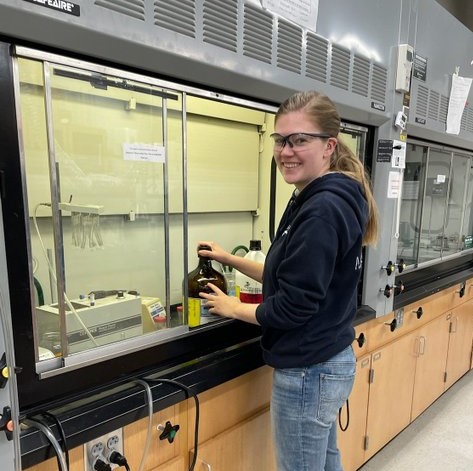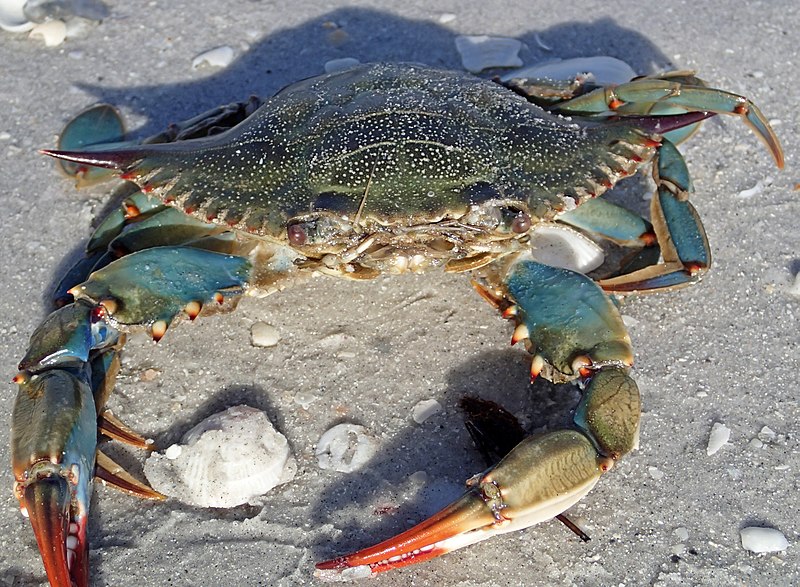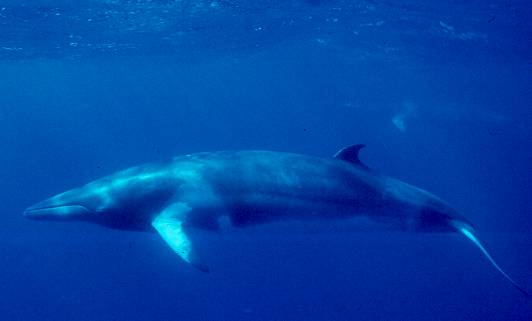When we enter a haunted house or watch a scary movie our hands get sweaty, our hearts race, and our eyes dart around for danger. But what about the chemicals that our body produce when we detect a threat?
How prey respond to predators.

On land prey (like deer) can be alerted to the presence of a predator (like a wolf) by smell or sound. But what about underwater? Sound travels four times faster underwater compared to through the air, but prey can’t rely on their predator accidentally stepping on a stick and making a noise. In the ocean, when a predator is nearby some species are known to change their behavior (leave the area), shift within the habitat (hide in a rock), or change their morphology (shape/makeup). Many marine animals don’t have eyes or ears and rely on certain chemical cues released by predators.

Is crab pee scary?
Well crab pee might not be scary to us (maybe just a little gross), it is a good indicator that crabs are present and they prey should beware. Mud crabs are known prey of blue crabs and are known to change their behavior when blue crabs are present. But what about organisms that can’t just leave? Blue crabs don’t just like to eat mud crabs, they also rather enjoy delicious oysters. A team of scientists in Georgia, USA wanted to see if young oysters would respond to similar chemical cues given off by blue crabs which scared off the mud crabs. The scientists isolated two chemicals within blue crab urine, homarine and trigonelline, which created a prey response in mud crabs. They exposed juvenile (teenage) oysters to either one of the chemicals or both of the chemicals in low and high concentrations.
Pee and oysters

Since oysters are sessile (stuck in place) strengthening their shells is the best defense against predators. The scientists found that when exposed to both homarine and trigonelline the oysters hardened their shells. However, when the oysters were only exposed to one of the chemicals at a time, they didn’t have much of a reaction, meaning that both chemicals were needed for the oysters to deem the threat worthy of response. Even with both chemicals around the oysters the same response was not induced as full-on blue crab pee, meaning there are likely some other chemicals in the pee creating an effect. The degree to which the oysters responded to the two chemicals was dose-dependent meaning that the higher the concentration the more the oysters strengthened their shells. This correlates to more predators being around or being closer to the prey and the prey needing more and more protection.
Why do we care about crab pee?
While we might not find blue crabs scary or worry about them eating us, we can learn a lot from their prey. Ecosystems are complicated things with too many moving parts to count. This study proves that multiple types of prey respond to the same types of chemical cues given off by a predator. As the oceans change due to climate change and new species are introduced to new areas it is important that we understand how predator and prey interact with one another.

While I have never lived close to the ocean, it has always had a special place in my heart. I recently earned my PhD in environmental chemistry from the State University of New York College of Environmental Science and Forestry (SUNY ESF) studying reef and coastal biogeochemistry. I focus on the lipid and trace metal composition of settling particles and surface sediment in coastal systems, primarily studying coral reefs. Currently, I am a Visiting Assistant Professor at Trinity College. When not diving or in the lab you can find me hiking with my dogs, reading, cross stitching, or just enjoying a good cup of tea!


